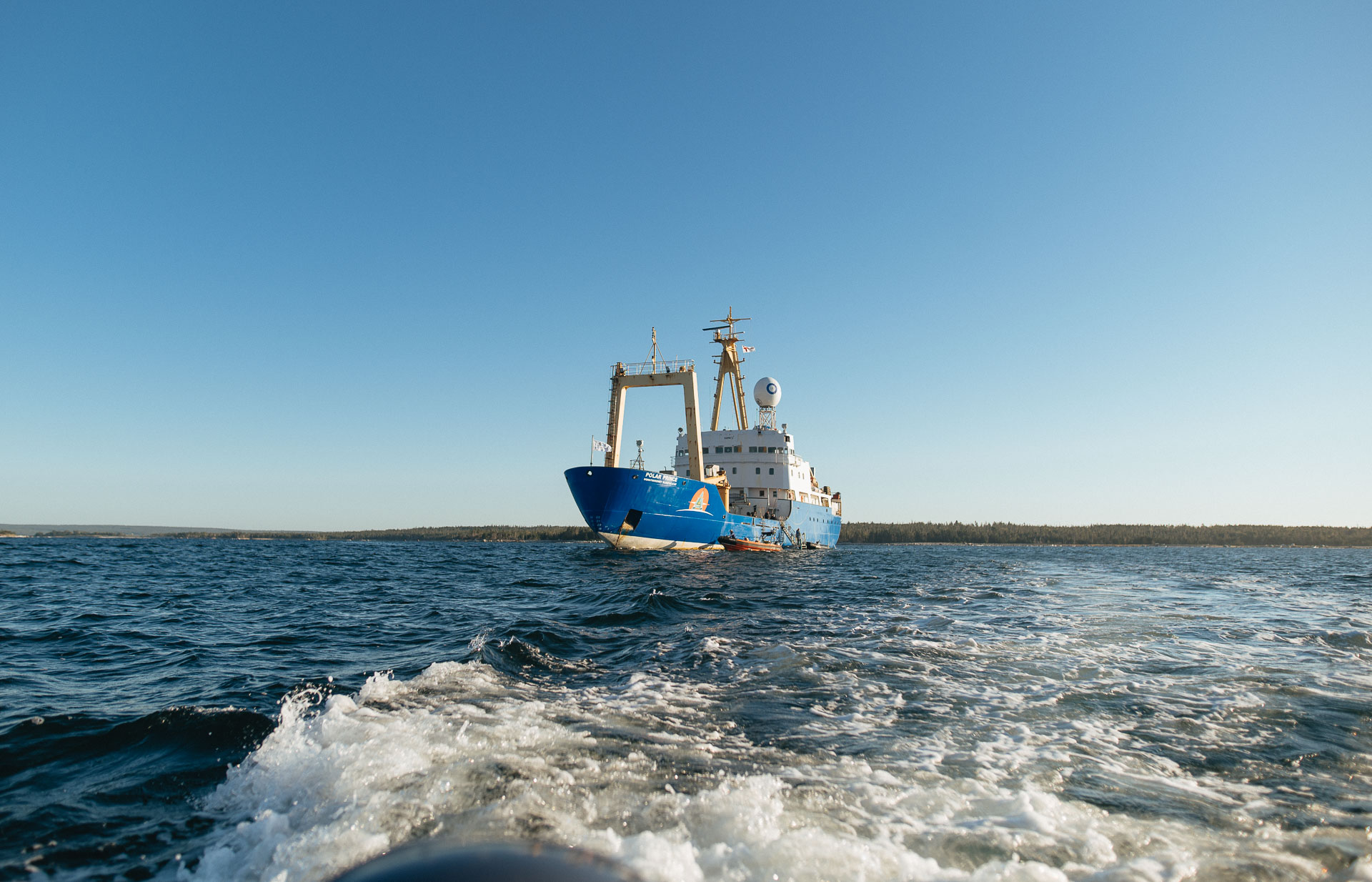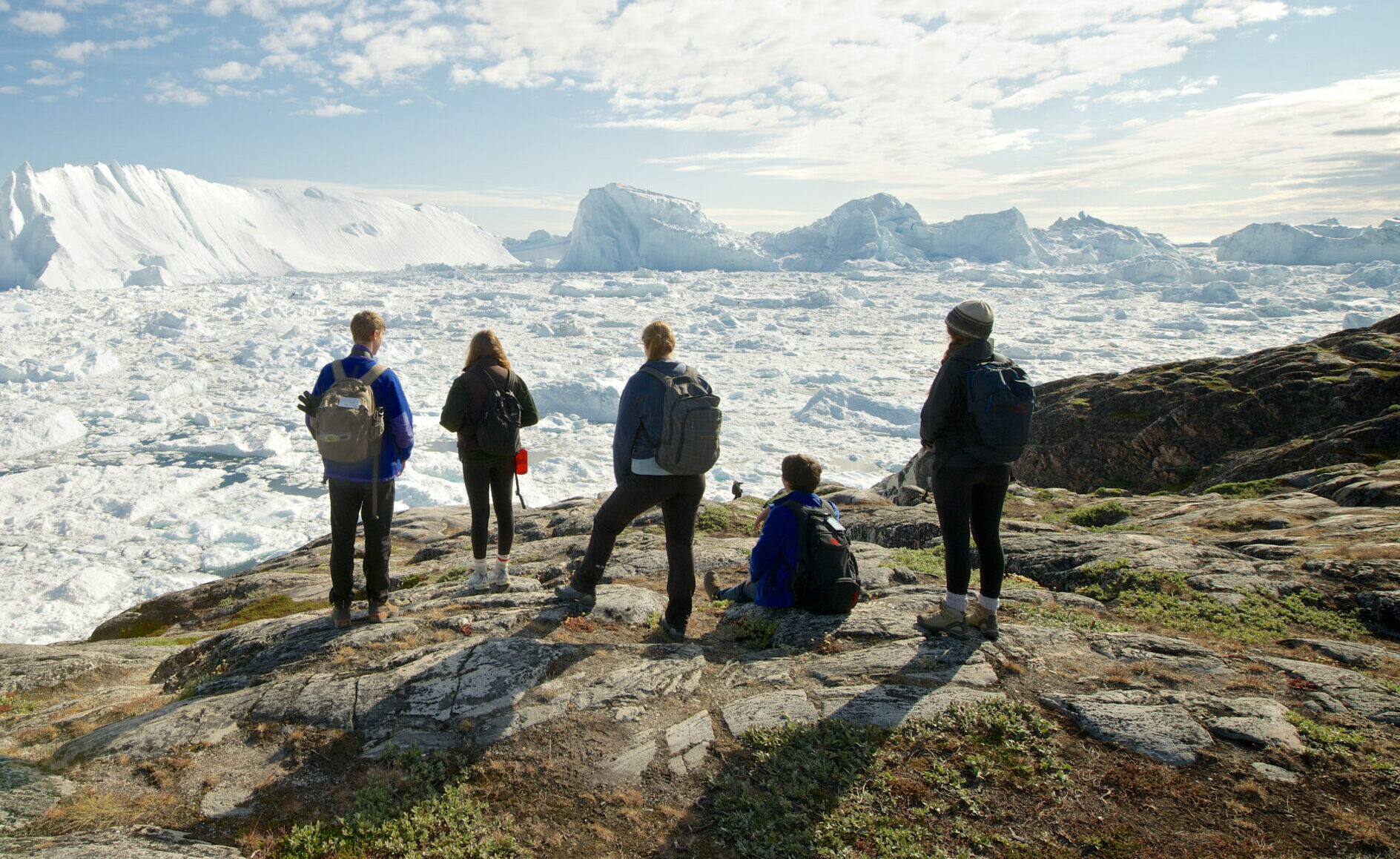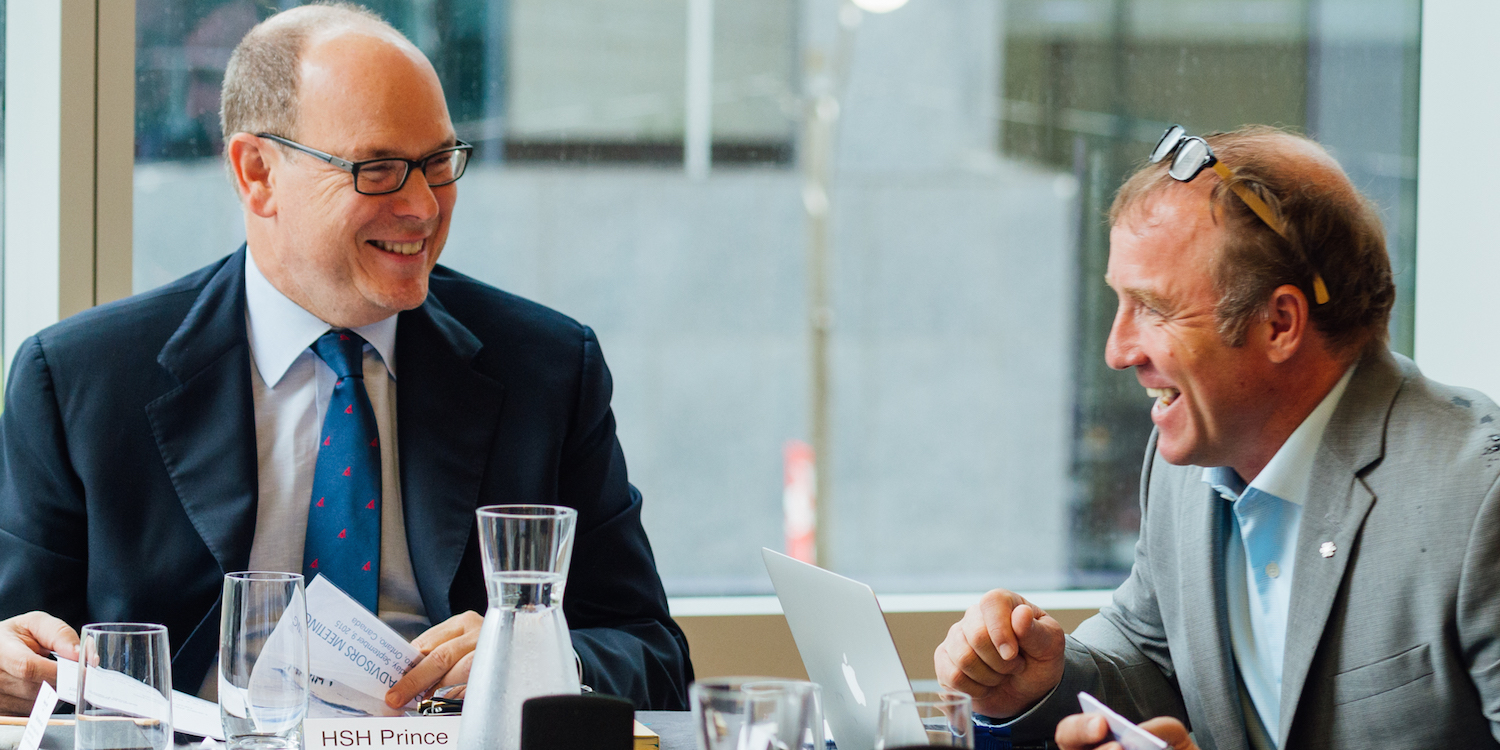Blue Futures Pathways and National Geographic Pristine Seas Expedition Recap
The Blue Futures Pathways Expedition was designed to introduce youth to career paths in the Sustainable Blue Economy and learn more about marine conservation, with an emphasis on Indigenous-led conservation. Like all SOI expeditions, this journey also aimed to help youth learn more about themselves, uncover their passions and build confidence.
We partnered with National Geographic on their Pristine Seas project and joined them for a two-week segment of their larger expedition, exploring and documenting the unique and largely unexplored underwater ecosystems of Northern Labrador Sea, Hudson Bay and James Bay. The Pristine Seas expedition had the ultimate goal of helping to inform the creation of new marine protected areas in these regions. Students on Ice welcomed five incredible Indigenous participants aged 18-30 from communities connected to Marine Conservation areas that Pristine Seas was exploring. Thanks to funding from Canada’s Ocean Supercluster our interns included Michael, who joined from Churchill, Belinda from Coral Harbour, Syracuse from Moosonee, Tyra from Waswanipi, and Tony from Inukjuak.
“For my entire life I’ve been interested in the science field, I’ve just wanted to learn more, and I knew that going on this {expedition} would lead me down the right path.”
The Expedition officially started with a land-based portion in Churchill, Manitoba on July 26th. Polar Bear International was a wonderful host, taking us around the town, joining our activities, and introducing us to some of their work in the community, including spending time on the Beluga Boat. The Beluga Boat is a research vessel with underwater cameras live-casting globally at explore.org. We all hopped aboard one morning and were live on the microphone as part of the feed!
During our time in Churchill, we stayed at the Churchill Northern Studies Centre and were able to learn about some of the exciting research they have on the go. One research initiative has been happening on site for 30 years, observing the impact that two degrees of warming will have on the tundra ecosystem. After we learned about the project we were also able to assist in data collection. We also spent time with Parks Canada across the river and went for a visit of the Prince of Wales Fort, but the highlight here was spending some time with SOI Alum, and Parks Canada staff, Austin.
Other activities included a special tour of the new Churchill Marine Observatory and learning about their research into the detection, impact and mitigation of oil spills and related contaminants in sea ice covered waters. We were so fortunate to have Katie de Muelles from the Indigenous Knowledge Keepers join us for an evening of fry bread, and to talk about the origins of Metis culture in Manitoba, and what it means to be Metis. Our visit wouldn’t have been complete without also talking about, and experiencing, eco-tourism. We partnered with SeaNorth Tours and waded out into the River on stand-up paddle boards to hang out with the beluga whales up close! This was definitely an unforgettable experience for all of us!

On our final evening in Churchill, Cree Elder, Georgina Berg, and researcher, Kt Miller, led a workshop on storytelling and using storytelling as a method to create and re-create knowledge that embodies Indigenous cultural ways of being. They shared ways of doing research with Indigenous Knowledge, including Inuit Qaujimajatuqangit and Cree Kiskayndamowin, and then invited the students to journal, join a walk on the beach, take polaroid pictures of things that reminded them of stories or memories, and participate in a sharing circle around the fire. It was the perfect way to conclude our time in Churchill.
We are so grateful to our many partners who made our Churchill visit possible and extra special. A special thank you to Polar Bears International, Parks Canada, Indigenous Knowledge Keepers, Churchill Marine Observatory, CALM air, Sea North Tours and the Churchill Northern Studies Center.
On July 28th we boarded our new home away from home, Oqwatnukewey Eleke’wi’ji’jit (The Polar Prince). We were welcomed with open arms by the Pristine Seas team and by the ship’s crew with Miawpukek Horizon Maritime. Our time flew by together and every day on board was filled with new adventures, non-stop learning and lots of laughter.

Early on in the expedition students learned about the Sustainable Blue Economy and each day on board naturally circled back to building this understanding and growing the list of career possibilities. As soon as we were settled in participants were invited to learn more about the different crew members on board and the roles needed to keep the ship in operation. Within the first few days on board, each participant was invited up to the bridge to take a turn at steering the ship! We also had a tour of the engine room and spent some time in the galley (kitchen) learning how to bake bread with the Captain. The Pristine Seas team also gave us tours of their spaces on board and made an open door policy for students to drop by the Science Lab and the Media Room at any time to learn and help out when possible.
One of our early stops, once we had crossed Hudson Bay, was in the Community of Chisasibi in Eeyou Istchee. After a beautiful zodiac ride to shore along La Grande River, including some music led by Jim and some local ecology information from Val, we arrived in Chisasibi. We were all taken on a tour through town, including a stop at the Chisasibi Heritage and Cultural Centre, and met with elected community leadership, including Deputy Chief Paula Napash who officially welcomed us! Together, we shared a beautiful meal, followed by presentations as we continued to get to know each other better. Pristine Seas used this opportunity to share a video and presentation about their expedition. Members of the Chisasibi Eeyou Research and Resource Centre (CERRI) also shared about their research, and SOI shared our involvement, including a very moving speech by Cree Nation participant, Tyra. We were grateful to have members from CERRI join us on the next leg of the journey as we were excited to learn more about their community-led and community-driven work in the Cree Nation of Chisasibi.
We also welcomed aboard Christine from the Canadian Hydrographic Survey in Chisasibi. New technology came aboard with her to help gather data to further understand the Hudson Bay and James Bay as much of this region is uncharted. We were so grateful to Christine for taking the time to share more about her work with us while we were on board together.

In order to complete the science and capture the film that the Pristine Seas required for their expedition, we stopped at several islands in Eeyou Istchee, specifically North Twin Island, South Twin Island, and Charlton Island. Unfortunately, bad weather did not allow us into Mushkegowuk but we were so grateful for all of the beautiful places we did visit.
On each landing participants joined a different team, offering them the opportunity to try a little bit of everything. We would head out on zodiacs to drop the traps or the underwater cameras, or do some trawling or grabs and then assist with specimen sorting back on board. Participants could even be found using the seine net out on the beaches and measuring and releasing specimens. They joined the media team and watched how to conduct interviews, capture footage and even fly the drone.
As the journey continued and everyone had gotten their feet wet (sometimes literally), participants identified the areas that they were most interested in. We used this information to match up mentoring opportunities so each participant had the opportunity to follow their own path and dive a little deeper into where their interests were.
In order to contextualize the expedition, the students participated in several different workshops up in the hangar. SOI staff member Valérie, along with the rest of our team, helped walk the students through an exploration of the cultural and colonial history of what is now known as Canada, examining key moments in time through the storytelling of both the Colonial and Indigenous perspectives and how those stories and key events have led to creating the context for Indigenous assertion and Indigenous-led conservation and stewardship.
“I didn’t realize how interested western science was in our voices, now I can see our culture and science merge into something beautiful.”
Valérie also introduced us to Indigenous Guardians, something that was of interest to everyone. Indigenous Guardians help Indigenous Nations honour the responsibility to care for lands and waters. They serve as the “eyes and ears” of traditional territories. Guardians are trained experts who manage protected areas, restore animals and plants, test water quality and monitor development. They play a vital role in creating land-use and marine-use plans. They connect youth with Elders and provide training that prepares young people to become the next generation of educators, ministers and leaders. Through viewing videos and storytelling, Valérie led a session examining and discussing the importance of Indigenous stewardship, with a specific emphasis on the work of the focus regions of the Pristine Seas expedition.
Students also listened to a series of life stories shared by several of the amazing people on board. Everyone had their own path to bring them to the ship and each talk offered nuggets of wisdom that won’t soon be forgotten. The students shared how inspiring it was to learn about all of these different paths and understand there is no right way. So much of the journey of life is being open to trying new things, learning, and paying attention to what interests us and what is important to us.

No SOI expedition is complete without some special community time and this was no exception. Halfway through our expedition, we took a day just for us to recalibrate. We spent the morning in the sunshine stand-up paddle boarding and kayaking and we spent the afternoon sitting around a fire, making bannock on a stick, berry picking and practicing storytelling on camera. Many of us shared this day as one of the highlights of the expedition.
While this expedition was designed for youth to be exposed to different career paths in the Sustainable Blue Economy and to learn more about Indigenous-led conservation, it was so much bigger than that. We truly became a family. We played games and we laughed. We opened up to each other. We asked, and answered hard questions. We dreamed together. We drew together. We sang together. All of us have left with new curiosities and questions and as we welcome these five new participants into the Alumni Program we can’t wait to see what will come next!





